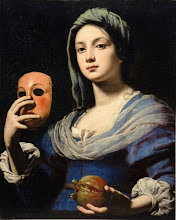... Innocence is often thought of as a quality projected outward. It means, literally, ‘not harm’. If a person is innocent, they aren’t going to harm you. But another way to consider the idea of harmlessness is that which is unharmed. It is a place within our own self, untouched by harm. Hans Christian Andersen believed in an untouched innocence at the core of every person. “She cannot receive any power from me greater than she now has,” says the Finn woman of Gerda in The Snow Queen, “which consists in her own purity and innocence of heart.”
Children had special access to this innocence – animals and grandmothers did as well – but the innocence was inside everyone. Innocence could be hidden and emerge, or it could be apparent and then corrupted. See, for example, the devil’s mirror in The Snow Queen, which had the peculiar power to make everything good and beautiful seem like nothing. The loveliest landscapes looked like boiled spinach and the very best people became hideous or stood on their heads and had no stomachs.
To be wholly innocent was rare. To be wholly innocent, for Andersen, meant to be wholly yourself. It meant that you were free from the distorted reality of the devil’s mirror. There is a connection in Andersen’s work between innocence and reality, then, because innocence is truth. And just as truth is eternal, so is innocence. Though many of Andersen’s tales are tragedies, ending in death or humiliation, they all affirm the importance of a life lived toward an eternal, personal truth. This is what Andersen meant when he said, “Every man’s life is a fairytale, written by God's fingers.” This doesn’t mean that every man’s life is a fantasy. It means that every man’s life is a quest toward reality.
- Stefany Anne Golberg
Rie Cramer's 1931 illustration for The Little Match Girl by Hans Christian Andersen




















No comments:
Post a Comment